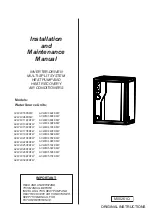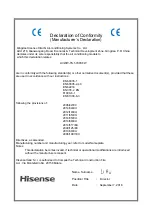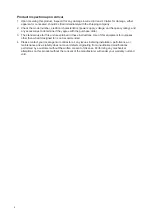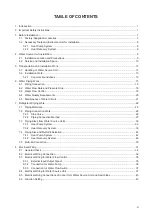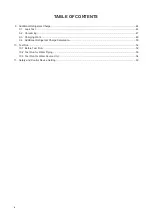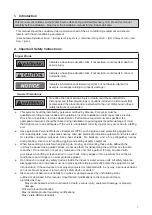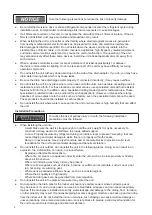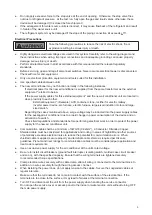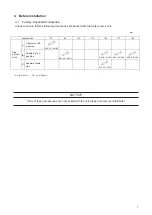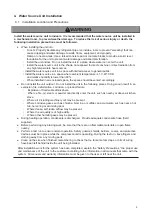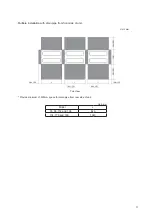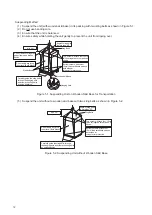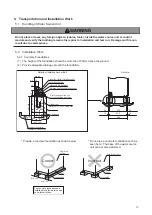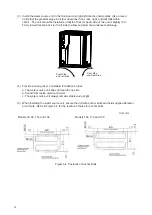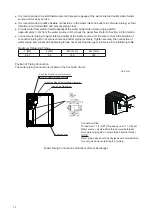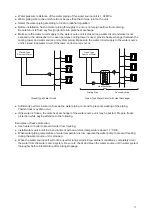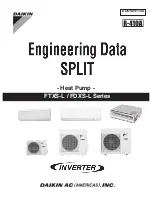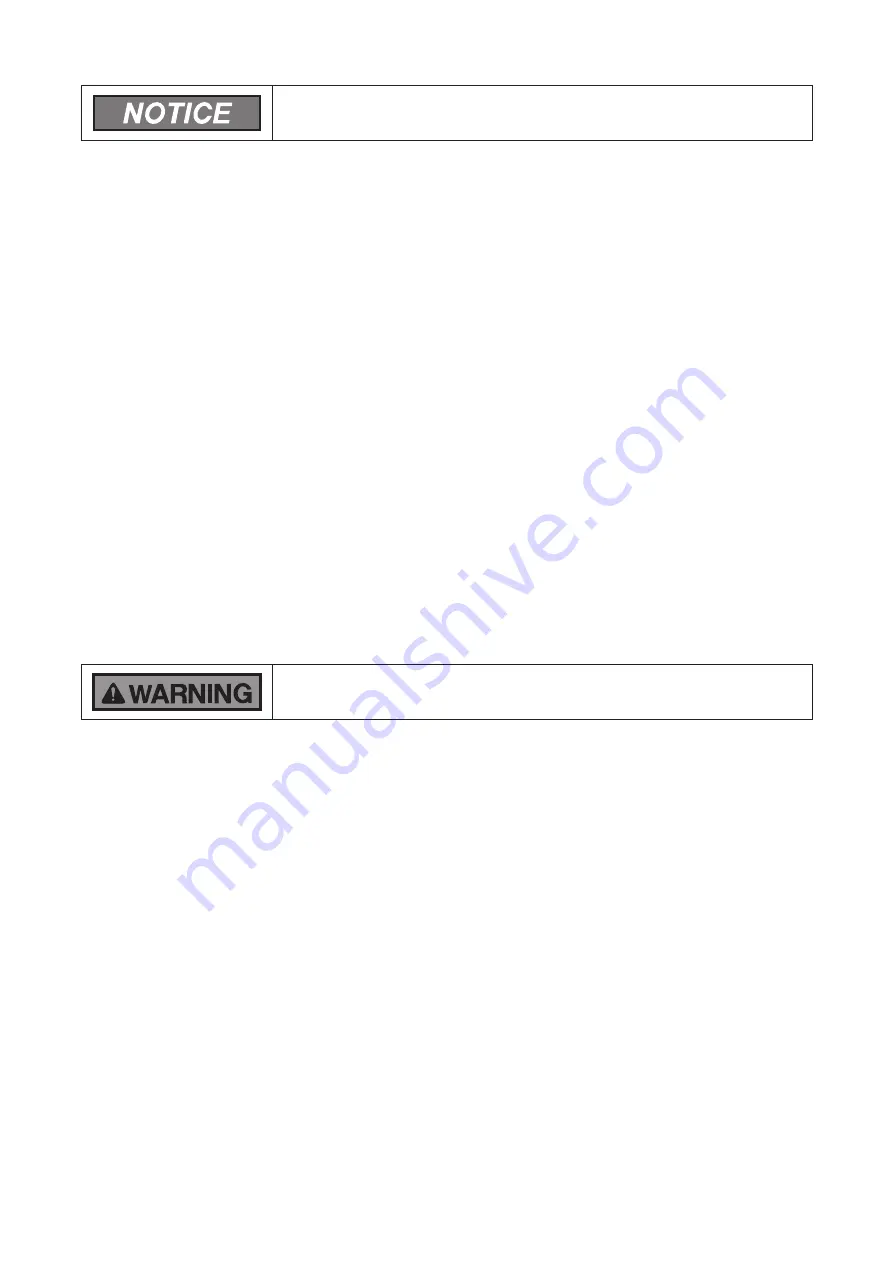
2
Take the following precautions to reduce the risk of property damage.
● Be careful that moisture, dust, or variant refrigerant compounds not enter the refrigerant cycle during
installation work. Foreign matter could damage internal components or cause blockages.
●
If air filters are required on this unit, do not operate the unit without the air filter set in place. If the air
filter is not installed, dust may accumulate and breakdown may result
.
● When installing the unit in a hospital or other facility where electromagnetic waves are generated
from nearby medical and/or electronic devices, be prepared for noise and electronic interference
Electromagnetic Interference (EMI). Do not install where the waves can directly radiate into the
electrical box, controller cable, or controller. Inverters, appliances, high-frequency medical equipment,
and radio communications equipment may cause the unit to malfunction. The operation of the unit
may also adversely affect these same devices. Install the unit at least approximately 3m away from
such devices.
● When a wireless controller is used, locate at a distance of at least approximately 1m between
the indoor unit and electric lighting. If not, the receiver part of the unit may have difficulty receiving
operation commands.
● Do not install the unit with any downward slope to the side of the drain adaptor. If you do, you may have
drain water flowing back which may cause leaks.
●
Be sure the drain hose discharges water properly. If connected incorrectly, it may cause overflow.
● Do not install the unit in any place where oil can seep onto the units, such as table or seating areas in
restaurants, and so forth. For these locations or social venues, use specialized units with oil-resistant
features built into them. In addition, use a specialized ceiling fan designed for restaurant use. These
specialized oil-resistant units can be ordered for such applications. However, in places where large
quantities of oil can splash onto the unit, such as a factory, even the specialized units cannot be used.
These products should not be installed in such locations.
● Do not install the unit where water can seep into the unit or where there is high humidity that can affect
the unit.
Installation Precautions
To reduce the risk of serious injury or death, the following installation
precautions must be followed.
● When installing the unit into…
◦ A wall: Make sure the wall is strong enough to hold the unit’s weight. It may be necessary to
construct a strong wood or metal frame to provide added support.
◦ A room: Properly insulate any refrigerant tubing run inside a room to prevent “sweating” that can
cause dripping and water damage to walls, floors, or property within the space
.
◦
Damp or uneven areas: Use a raised concrete pad or concrete blocks to provide a solid, level
foundation for the unit to prevent water damage and abnormal vibration.
● Do not install the unit outdoor, do not install the unit in the following places. Doing so can result in an
explosion, fire, deformation, corrosion, or product failure
.
◦
Explosive or flammable atmosphere
.
◦
Where fire, oil, steam, or powder can directly enter the unit, such as in close proximity or directly
above a kitchen stove.
◦ Where oil (including machinery oil) may be present.
◦ Where corrosive gases such as chlorine, bromine, or sulfide can accumulate, such as near a hot
tub, hot spring or swimming pool.
◦
Where dense, salt-laden airflow is heavy, such as in coastal regions.
◦
Where the air quality is of high acidity.
◦
Where harmful gases can be generated from decomposition.
● Do not install the unit in the place where water may enter the unit.
● Do not position the drain pipe for the indoor unit near any sanitary sewers where corrosive gases
may be present. If you do, toxic gases can seep into breathable air spaces and can cause respiratory
injuries. If the drainpipe is installed incorrectly, water leakage and damage to the ceiling, floor, furniture,
or other property may result. If condensate piping becomes clogged, moisture can back up and can drip
from the indoor unit. Do not install the indoor unit where such dripping can cause moisture damage or
uneven locations. Use a raised concrete pad or concrete blocks to provide a solid, level foundation for
the unit to prevent water damage and abnormal vibration.
Summary of Contents for AVWW-114FKFW
Page 2: ......

